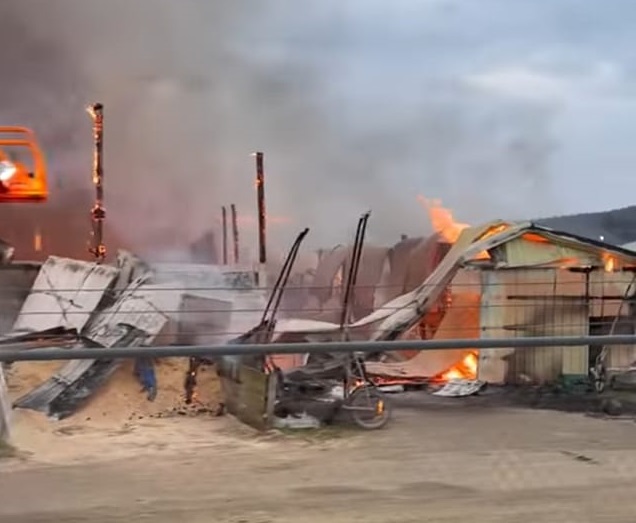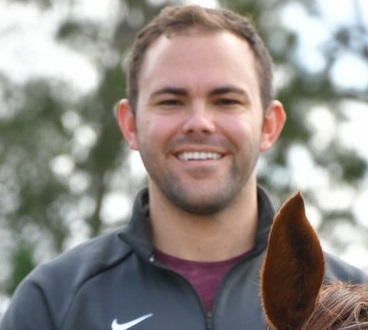It’s been nearly two months since alleged arsonist Boyd Fenton of Athens, Pennsylvania intentionally set fire to Barn F on the Tioga Downs harness racing backstretch, located in Nichols, New York, shortly after 6:30 a.m., November 9, 2023. The fire claimed the lives of 30 harness racehorses and forever changed the paths of trainers Allison Kolesar, Daniel Harvey, Edgar “Sparky” Clarke, Kevin Reynolds and Lee Morris.

Fenton, he’s facing four felony charges, which include arson and burglary, while the five trainers continue to grieve and figure out how to continue forward.
In the days and weeks following the Tioga Downs tragedy an outpouring of support flowed from around the world to the tiny upstate New York town which has a population of less than 1,000 people. Equipment donations came from Sacramento and Ontario and Minnesota and New Jersey, and just about everywhere else.
Then, there was the money. Ah, the money…
Almost $200,000 was raised in a Go Fund Me campaign. Jeff Gural, owner of Tioga Downs, donated $100,000 to the Tioga relief effort. An astounding $320,000 in pledges came from breeders and another approximately $150,000 came from private entities. A total of almost $800,000 in cash donations.
So, where did the money go?
There are many opinions on social media as to the final destination of the funds, most of which are incorrect. There was even a post saying NONE of the money had been released to those trainers and owners affected by the fire.
This is simply not true.

“The five trainers affected by the fire each received two $20,000 checks, for a total of $40,000 each, to date,” says Dan Daley, General Counsel for the Southern Tier Harness Horseman’s Association, and also the man in charge of distributing the money.
This fact was confirmed to me personally by trainers Lee Morris and Dan Harvey, both who have received their checks.
Ok, that’s $200,000 accounted for, where’s the remaining $600,000?
“$405,000 will go to the owners, weighted, and based on the valuations of the horses they lost. The remainder of the money, almost $200,000 will be split equally among the five trainers, when it’s received.”
When it’s received?
“Not all the money pledged is in yet,” claims Daley. “Paperwork went out to all the trainers and owners affected. When they sign and return the documents, they will receive their money. Two of the owners have been paid. We have received six of the 15 signed donation documents. We are talking about a lot of money here, it takes time,” Daley continued. “Checks are being cut, or in the process of being cut for all forms we have received. I would estimate that puts us at roughly $350,000 distributed (or) headed out the door to trainers (and) owners, to date.”
Money split equally between the five trainers? Is this fair? Lee Morris lost 12 horses while Dan Harvey lost two.
“The five trainers took a vote to split the money equally rather than weighted per head,” says trainer Dan Harvey. “The only vote to weight payment per head was from Lee Morris. I don’t know why, maybe it’s because he has a family to think about.”
Kayla Morris, wife of Lee Morris and speaking on his behalf, responds, “When Lee and I found out that the horses and equipment were not covered by the tracks insurance it was our idea to split the donated money equally among the five trainers.” Mrs. Morris continued, “When the option of being paid per head was presented, of course we voted for that. We had the biggest stable. We knew the majority (of trainers) weren’t going to vote for that. The smaller stables voted for an equal split. Lee and I knew that would happen and are fine with that.”
Wait, the contents of the barn were not covered by insurance? Only the barn structure itself was covered by the policy?
“They (the insurance company) gave me a hard time on the equipment,” says Gural. Since we had so much money contributed, I did not make an issue over it. Plus, we had (a lot) of equipment donated. I could make an issue if trainers feel they needed money for equipment.”
“I was upset when I found out the equipment wasn’t covered,” said Harvey. “I reached out to Mr. Gural and asked him for a copy of the policy, which he sent,” the trainer continued. “I pay rent on my stalls, why is insurance not included in that? And why is there only barn security on race days?”
What? No security? Could the fire have been prevented?
“We have cameras monitored 24/7 but (the) barn went up very fast,” says Gural. “A tragedy.”
“In the end, we lost $132,000 worth of equipment and the horses that we loved as pets,” says Morris. “Lee and I never cared about the money, but this is how we make our living. All we ask is that the owners don’t receive their money before all pledged money is in. What if it doesn’t come and the owners get paid and then there’s little left for the trainers? How will we rebuild? We had to use the initial $40,000 to survive. We have two small children and a third on the way,” Morris fears.
“I lost $40,000 in equipment alone, Harvey adds. “The money donated won’t replace what I lost.”
“This has been a nightmare,” Mrs. Morris concludes. “From being accused of knowing the suspect, yes, the day after the fire we had to go to the police station to prove we didn’t know him, to being accused of holding up payments. We are heartbroken but would like to say thank you to everyone who contributed. We are grateful.”
To read the original Harnesslink article on the Tioga Barn Fire, click here.
by Jason Rogers, for Harnesslink

 USA
USA Canada
Canada Australia
Australia New Zealand
New Zealand Europe
Europe UK / IRE
UK / IRE



